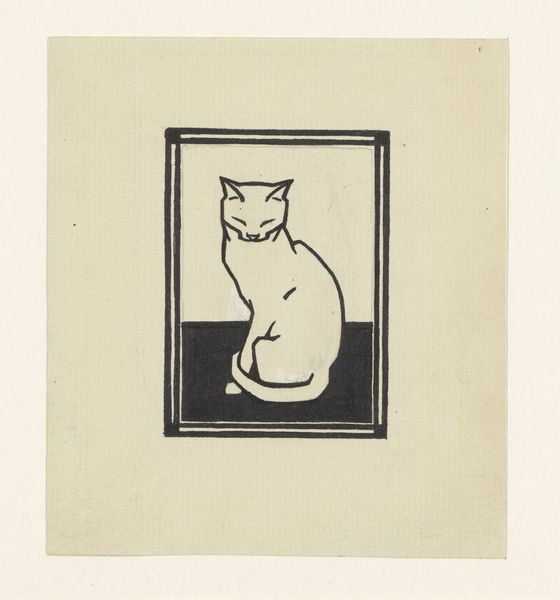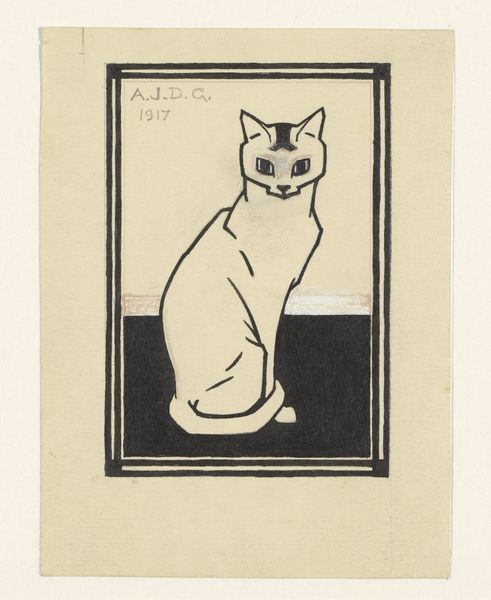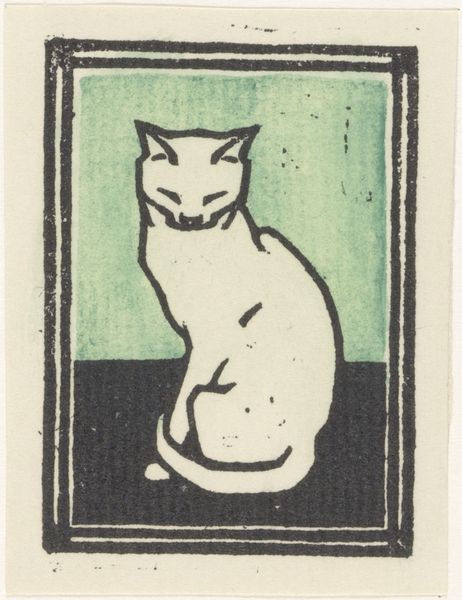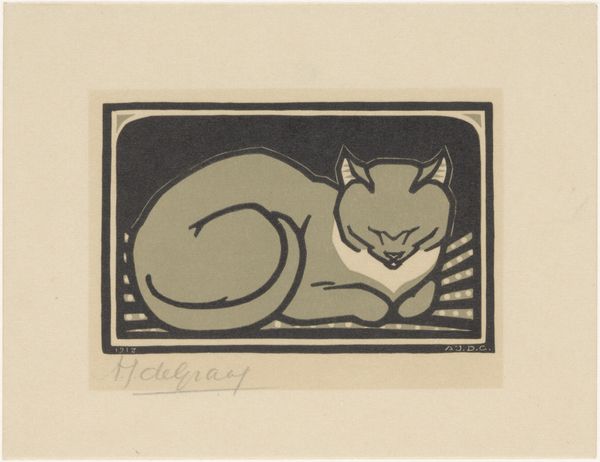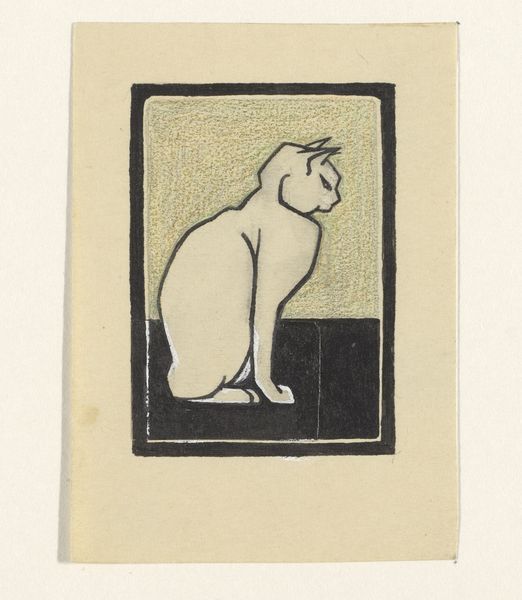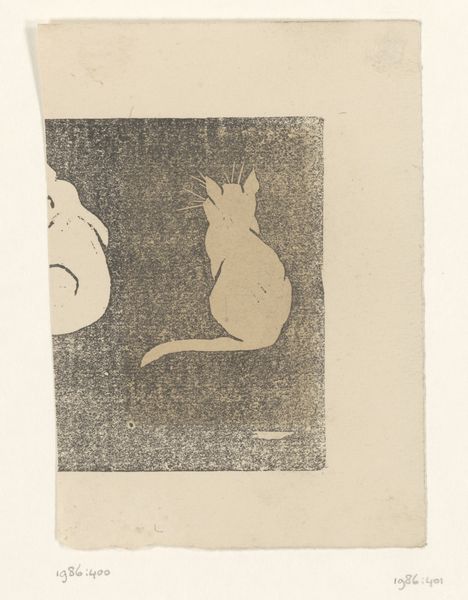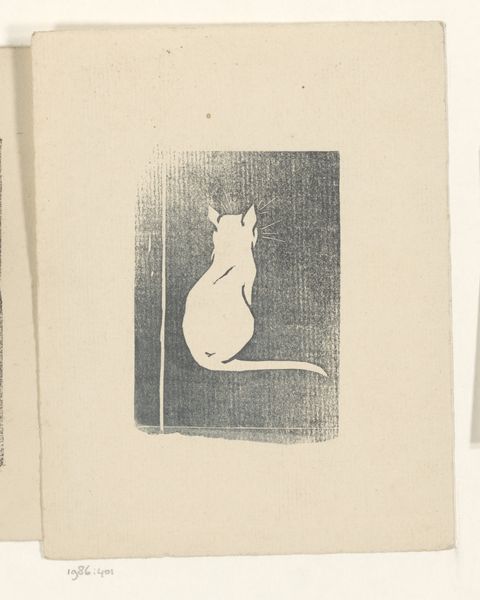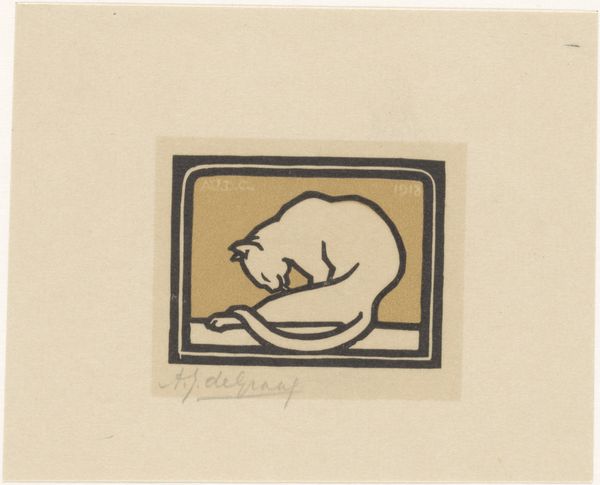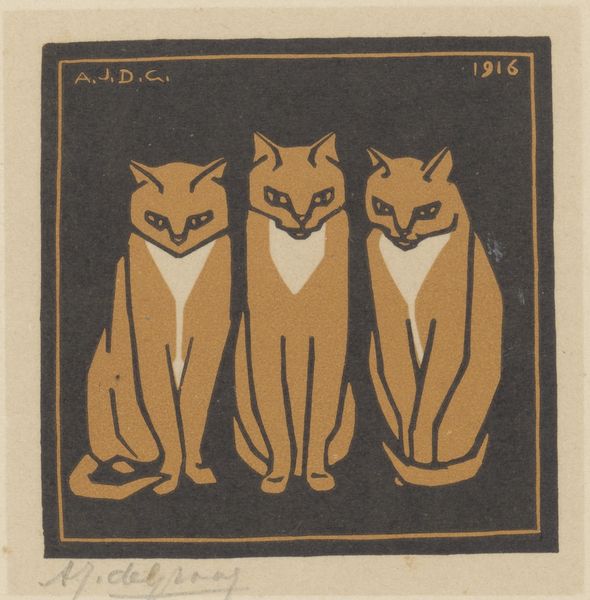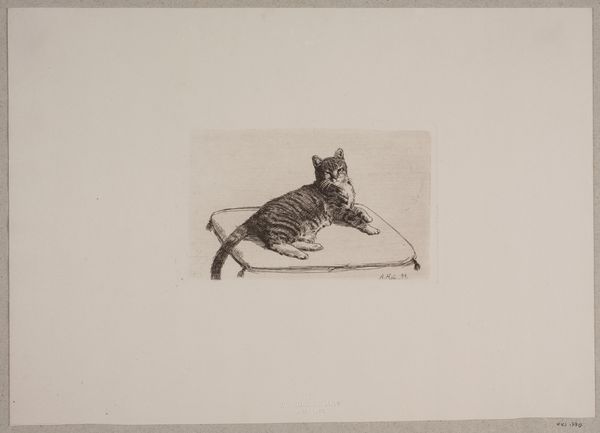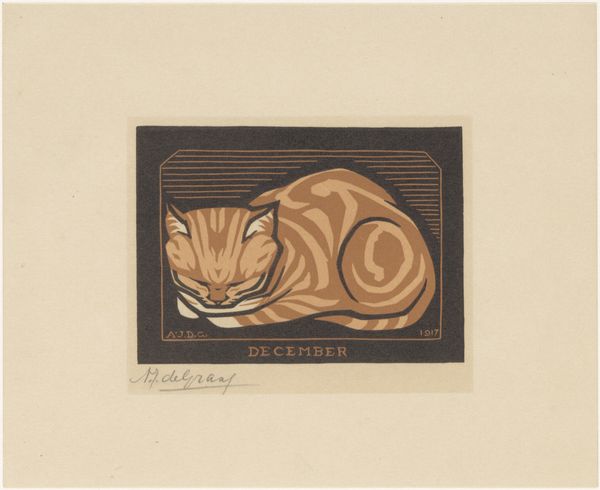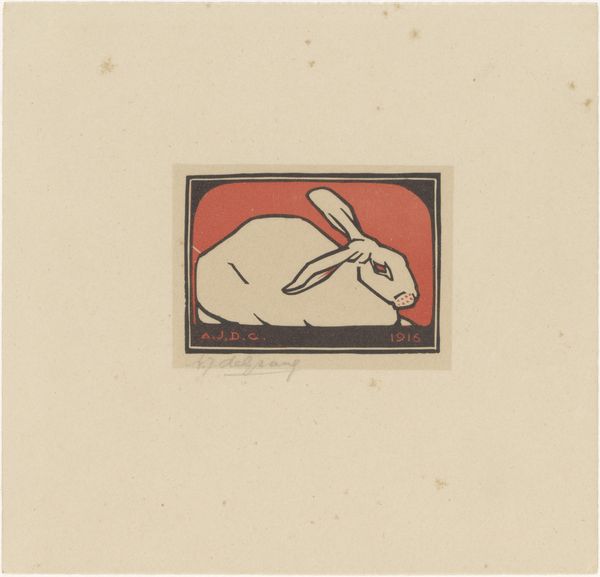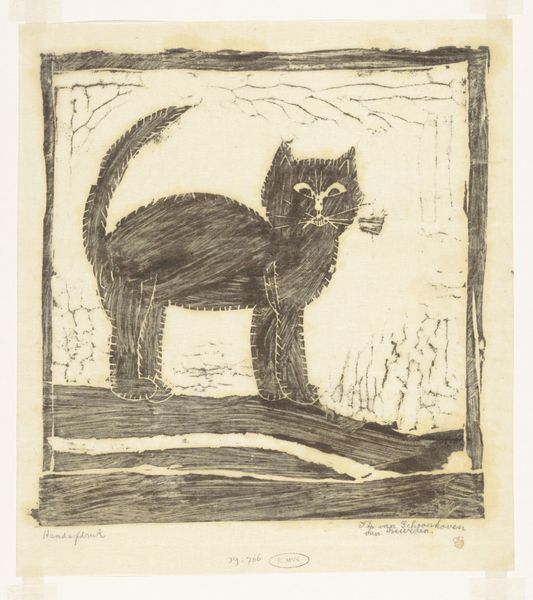
drawing, print, ink, woodcut
#
drawing
#
art-nouveau
#
animal
# print
#
etching
#
figuration
#
ink
#
geometric
#
woodcut
Dimensions: height 100 mm, width 103 mm
Copyright: Rijks Museum: Open Domain
Julie de Graag's woodcut, "Zittende kat," created around 1916, presents us with a stylized, seated cat, its form reduced to essential lines. In ancient Egypt, the cat was revered, embodying grace, independence, and mystery—a sacred animal linked to goddesses like Bastet. Consider how the feline form, so prevalent in ancient Egyptian art, finds new life in De Graag's modern rendering. The cat, throughout history, has oscillated between symbols of divinity and darkness, embodying both protection and the unknown. In medieval times, it was often associated with witchcraft and the occult. De Graag’s simplified lines strip away specific cultural baggage, yet the cat's inherent enigmatic nature persists. The direct gaze, though minimalist, evokes a primal sense of connection. Viewers are drawn into the cat's world of silent observation, tapping into the collective memory of feline symbolism. This image reminds us that symbols are not static. De Graag's cat, born from cultural memory, enters into a continuous cycle of reinvention, offering new layers of meaning with each viewing.
Comments
No comments
Be the first to comment and join the conversation on the ultimate creative platform.
